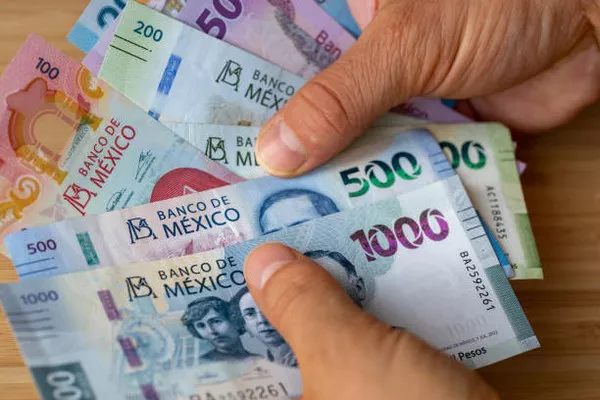The Mexican Peso (MXN) experienced a decline against the US Dollar (USD) on Wednesday, trading in the 16.50s range, following the release of US Consumer Price Index (CPI) data for March, which surpassed expectations.
The data revealed a higher-than-anticipated inflation rate for March, reducing the likelihood of an early interest-rate cut by the US Federal Reserve (Fed). The prospect of interest rates remaining elevated for a longer duration in the US provided a boost to the US Dollar, as higher rates tend to attract increased foreign capital inflows.
USD/MXN exhibited volatility post the release of the US CPI data, which significantly deviated from market expectations. According to the US Bureau of Labor Statistics, prices in the US surged by 3.5% year-on-year in March, surpassing the estimated 3.4% rise. This follows a 3.2% year-on-year increase in February. Additionally, CPI for core goods, excluding volatile food and energy prices, rose by 3.8% year-on-year, exceeding the expected 3.7%. Both inflation metrics recorded a 0.4% month-on-month increase in March, surpassing the estimated 0.3%.
The higher-than-forecast inflation levels have kept price pressures well above the Federal Reserve’s 2.0% target, diminishing the likelihood of an interest-rate cut in June as previously predicted.
Despite expectations of prolonged higher interest rates in the US, the Mexican Peso has exhibited a long-term uptrend against most counterparts, primarily due to relatively high interest rates in Mexico, which attract foreign capital inflows. Although the Bank of Mexico (Banxico) lowered its Overnight Interbank Target Rate from 11.25% to 11.00% in March, it refrained from committing to further rate cuts. The decision was made in light of persistently high inflationary pressures, as reflected in meeting minutes highlighting the continued tilt in favor of stubbornly high inflation. Consequently, Banxico is likely to maintain interest rates at relatively elevated levels, providing support to the MXN.
This week’s release of Industrial Production and Retail Sales data for Mexico is not expected to significantly impact the Mexican Peso individually, but it will offer insights into the country’s economic performance. Stronger-than-expected macroeconomic data is likely to bolster the MXN further, supporting Banxico’s view of a dynamic and resilient economy, thereby extending the duration of elevated interest rates.


